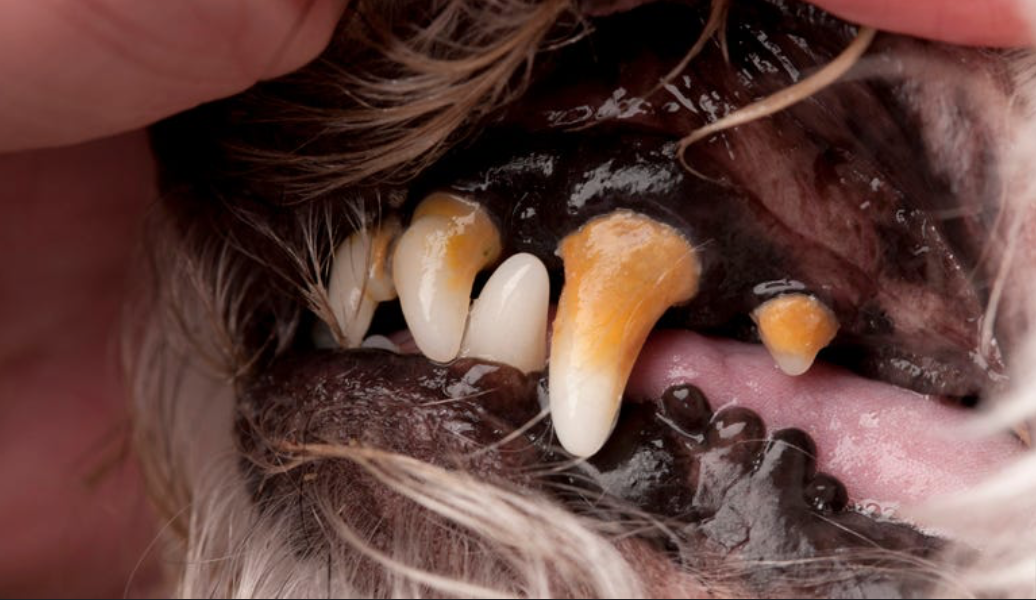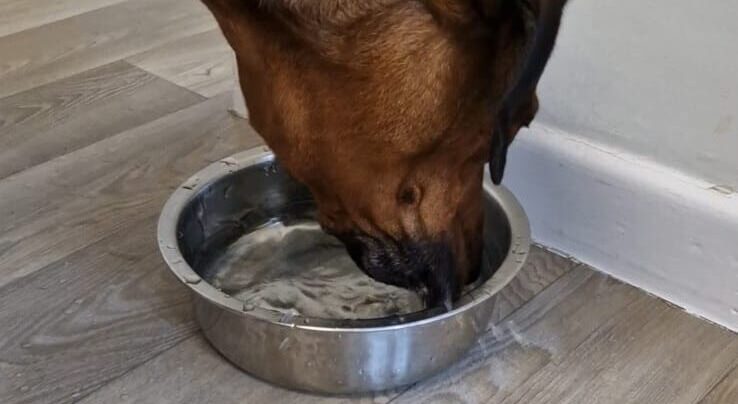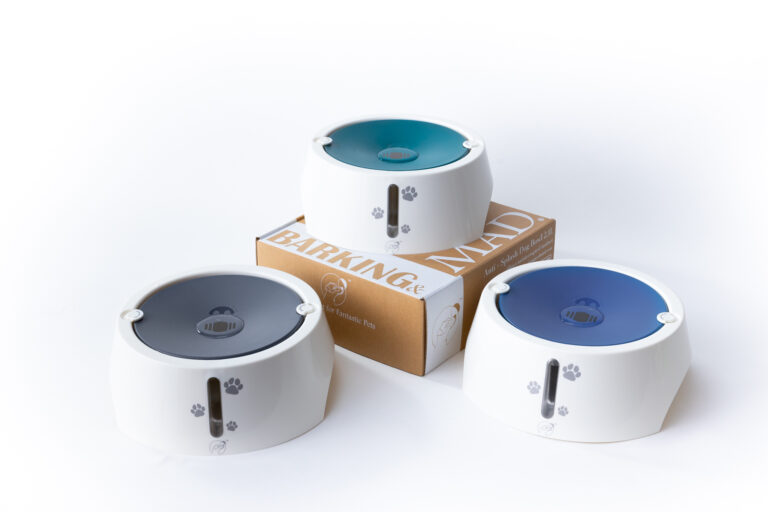So you’ve woken up to your beloved dog’s face in your face. As they lean in for a morning kiss, you’re hit with a blast of dog breath. You love them, but their breath is gross – no judgement, and no I’m not commenting on my own morning breath!
All jokes aside, brushing your dog’s teeth may seem like an extra task, but it’s one of the most important parts of your dog’s overall health.
Let’s get into the importance of dental care and why starting early will save you a lot of trouble—and money—later.

Why Brush Your Dog’s Teeth?
Just like humans, a dog’s mouth is a breeding ground for bacteria. If left unchecked, these bacteria can form plaque and tartar on your dog’s teeth, leading to dental disease. In fact, dental disease is the most common health issue seen in dogs.
By the age of three, most dogs have some form of periodontal disease which can lead to tooth loss, gum disease and even more severe health problems like heart, liver and kidney disease if the bacteria gets into the bloodstream.
Teeth cleaning isn’t just about fresh breath—it’s about keeping your dog’s mouth healthy and preventing severe health issues. Think of it this way: dental care is not a luxury for your pet but a necessity.
Healthy Teeth = Healthy Dog
Your dog’s dental health is directly tied to their overall health so regular tooth brushing is essential for a healthy pet.
The Cost of Ignoring Dental Care
It’s easy to overlook your pet’s teeth especially when it comes to getting them used to the tooth brushing process. However, if left untreated, an unhealthy mouth can lead to costly and painful consequences!
Veterinary dentistry procedures to clean your dog’s teeth under anaesthesia can range from £300 to over £1,000 depending on the severity of the condition and the size of your dog.

The Reality of Dental Disease
Of course, money isn’t the only thing to take into account. Dental problems can cause your dog a lot of pain and discomfort. Imagine if you never brushed your teeth or went to the dentist—your dog is no different.
A build up of plague can start to get very uncomfortable, and if left untreated will lead to swollen gums and periodontal disease. Starting a dental care routine early, is the best way you can avoid these costs and keep your pet happy and healthy.
Start Young – The Secret to Success
Getting your puppy used to tooth brushing from an early age is key. Puppies are more adaptable and can get used to having their mouths handled and their teeth brushed without much fuss. As they get older the brushing process will be much smoother. Think of it like teaching a child to brush their teeth—it’s much easier if it becomes part of their routine early on. If you have a puppy be sure to check out our ultimate new puppy training guide below!
This doesn’t mean it’s ever too late to clean your pet’s teeth though! Although it may take some time for an older dog to accustomed, stating as soon as possible can still help prevent any oral health issues.

Start by gently lifting your puppy’s lips and rubbing your finger along their gums and teeth. This will help them get used to the feeling of something in their mouth. Once they’re comfortable, you can introduce a dog toothbrush or finger brush and dog toothpaste.
When you start brushing your dog’s teeth make it a positive experience by rewarding them with a tasty treat after each session. This not only rewards good behaviour but makes the brushing process something your dog looks forward to rather than dreading. It’s all about that positive reinforcement!
Tooth Brushing Tips Using Dog Toothpaste
Never Use Human Toothpaste
Remember, human toothpaste is not safe for dogs as it contains ingredients like Fluoride and SLS (Foaming Agent) which can be toxic if ingested!
Start Slow: Let your dog taste the dog toothpaste. Then gently raise their lips and rub the toothpaste on their teeth with your finger. Over time introduce a toothbrush or finger brush.
Choose the Right Tools: Use a toothbrush or finger brush that’s the right size for their mouth. These are designed to be gentle on your dog’s gums and teeth.
Use Dog Toothpaste: The real benefit of dog toothpaste is that it comes in all flavours which are appealing to dogs like chicken, seafood or beef! In a pinch, you can use plain water as it’s the physical act of brushing that removes any plague. No human toothpaste!
Be Gentle and Patient: Brushing your dog’s teeth should be a calm and positive experience. Lift your dog’s lips and brush in small circular motions. Make sure to get to the back teeth and the gum line where plaque builds up.
Reward Your Dog: Always reward your dog with a treat or praise after brushing. This will help them associate the brushing process with something positive.
Be Consistent: Consistency is key. Brushing your dog’s teeth regularly will make it a habit for both you and your dog, making it less stressful and easier over time.

How Often Should You Brush Dog Teeth?
Ah the million dollar question!
Ideally you should brush your dog’s teeth every day. Just like humans regular brushing is the best way to keep your dog’s teeth clean and prevent tartar buildup. If daily brushing is not possible, aim for at least 2-3 times a week to manage plaque and oral health.
For those who can’t stick to a regular brushing schedule dental chews and treats can help keep your dog’s teeth clean but they should not replace regular brushing.
Dental chews can reduce plaque and tartar to some extent but they don’t reach the gum line where most dental problems start. Regular dental care including professional cleanings Is recommended by your vet is essential to prevent dental disease in dogs.
Still Have More Questions? The FAQ
How often should I clean my dog’s teeth?
Daily is recommended but at least 2-3 times a week to prevent plaque and maintain oral health.
Do dogs need toothpaste?
Yes, dogs need dog specific toothpaste. Your toothpaste should never be used as it contains ingredients that are toxic to dogs.
Is it too late to start brushing my dog’s teeth?
It’s never too late to start brushing your dog’s teeth. It may take some time for an older dog to get used to it but starting now can still help their oral health and prevent future dental problems.
How often should I replace my dog’s toothbrush?
Every 3-4 months or sooner if the bristles become frayed.
Do I have to brush the inside of my dog’s teeth?
Yes, brush both the outside and inside of your dog’s teeth to get all surfaces clean and plaque free.

The End Part
Brushing your dog’s teeth is part of their overall health and well-being. Start early and brush regularly to prevent painful dental problems and costly vet dentistry down the line. Remember your dog’s mouth is just as important as the rest of their body.
Grab that toothbrush and toothpaste and make tooth brushing a fun and rewarding part of your dog’s daily routine!
I would like to thank you Pam at Wishing Well Vets, Glasgow for providing me with inspiration for this blog!







